How to choose the right commercial ride-on mowers for your needs: an essential buying guide
For any team involved in turfcare, choosing the right commercial ride-on mower is a decision that can significantly affect overall productivity, turf health and aesthetics as well as long-term operating costs.
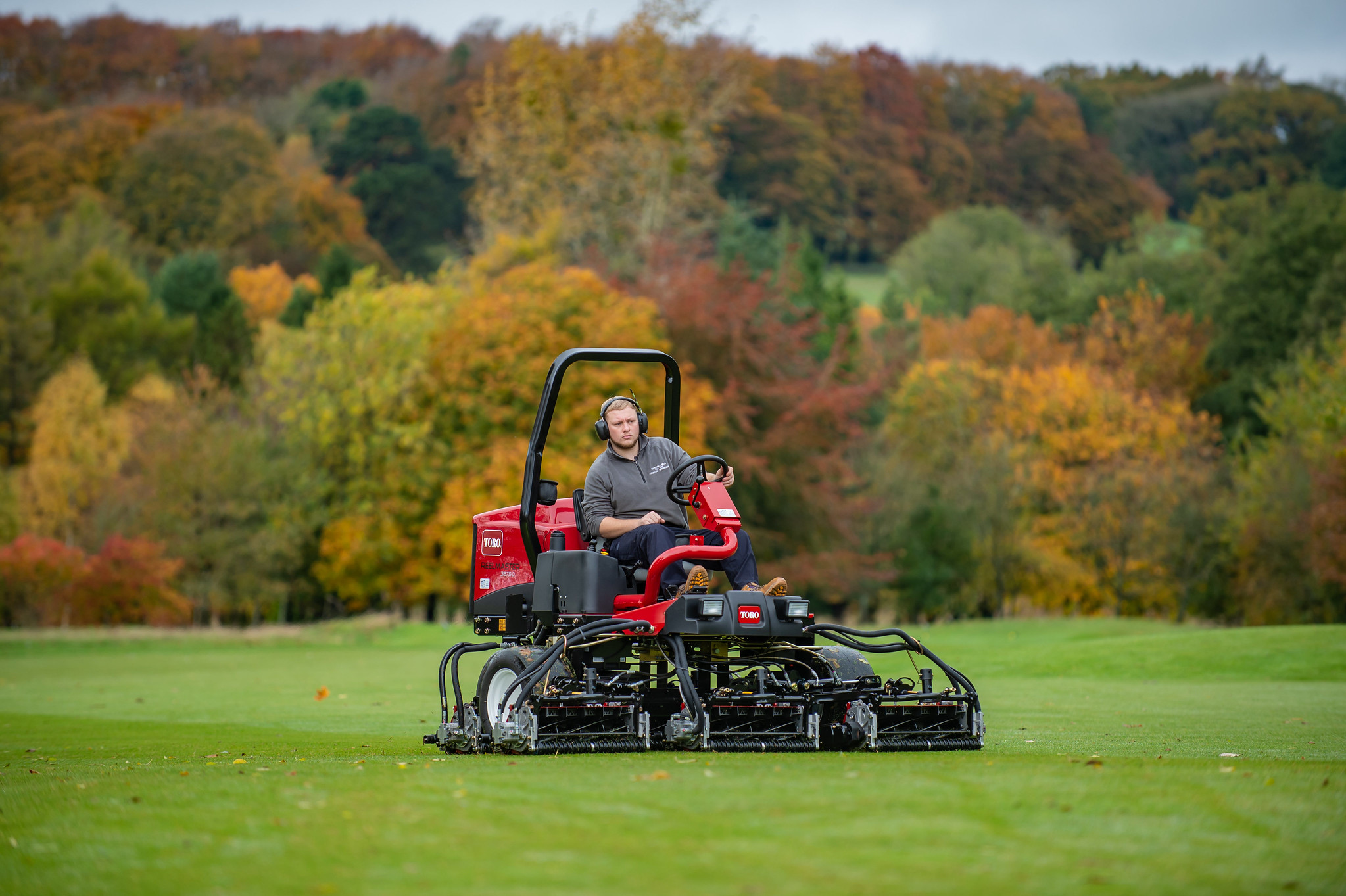
Whether maintaining golf courses, stadium and training pitches, parks or public spaces, selecting the best machinery for your situation starts with understanding your specific needs and matching those with the right mower features and capabilities.
In this buyer’s guide for commercial ride-on mowers, we’ll explore what to consider when investing in a new machine and how to meet your operational goals.
Understanding your turfcare needs
Determine the size and needs of the mowing area
One of the most important considerations is the scale of the area you’re going to maintain.

For instance, when mowing fairways, playing fields or large estates you might want a machine with a wide cutting deck and a powerful engine to cover large areas efficiently. For smaller or more segmented areas, a compact mower that prioritises agility and precision may be more appropriate. And of course the greens will have their own specific requirements.
After you evaluate the total acreage you need to mow, consider too the average frequency of cutting and how long your team can realistically spend on each job: you’ll more easily identify the right kind of mower to maximise operational efficiency.
Assess the terrain and obstacles
The topography of your site plays a key role in the selection of a mower. Flat, open areas are relatively straightforward, but grounds with undulating terrain or obstacles like trees, flower beds or bunkers require a machine built to be light and agile.
Moreover, sites with slopes might require four-wheel drive (4WD) models to provide the traction needed to mow safely and effectively. And if the space includes tight corners or narrow paths, zero-turn mowers could be the ideal choice due to their minimal turning radius, which allows operators to effortlessly mow around obstacles without the need for difficult manoeuvres.
Consider the type of grass and desired cut
Not all turf is created equal: grass type, density and desired appearance should influence the type of mower you select. Fine turf areas such as golf greens, for instance, require a clean, short cut, typically achieved with cylinder mowers. Rotary mowers, on the other hand, might be a better alternative for the coarser, longer grass growing on golf roughs, parks or commercial grounds.

Do you manage multiple turf types? If acquiring multiple machine types isn’t an option, you might want to prioritise versatility. Some ride-on mowers come with adjustable cutting heights and interchangeable decks to switch between multiple blade styles, allowing you to easily alternate between close trimming and rough cutting.
Which ride-on mower is right for you?
There are several types of commercial ride-on mowers available today, each better suited to different working environments and tasks. Here are some of the most common options.
1. Rotary ride-on mowers
Rotary mowers operate with one or multiple rotating blades that cut grass on impact. While not as precise as the slicing action of their cylinder counterparts, rotary mowers deliver a clean and consistent finish, performing well across a broad range of grass lengths and conditions.
Due to their straightforward blade design, these mowers are generally more forgiving and resistant to impact with unseen debris, such as stones and sticks. The rotating blades also create an upward draft that lifts long grass stems to facilitate mowing at medium to high cutting heights, allowing rotary mowers to easily tackle a wide variety of applications – from parks to school grounds, large estates and golf roughs.
Among the many options available, the Toro Groundsmaster 3500-D is a great example of a rotary mower built for performance and versatility. Its patented Sidewinder technology allows the three cutting units to shift 12 inches to either side, offering 24 inches of total lateral movement for easier trimming in hard-to-reach areas. Blending a compact design with a 68-inch cutting width, the Groundsmaster 3500-D strikes the ideal balance between broad coverage and manoeuvrability – reducing the need for multiple machines to achieve more even with a small budget.
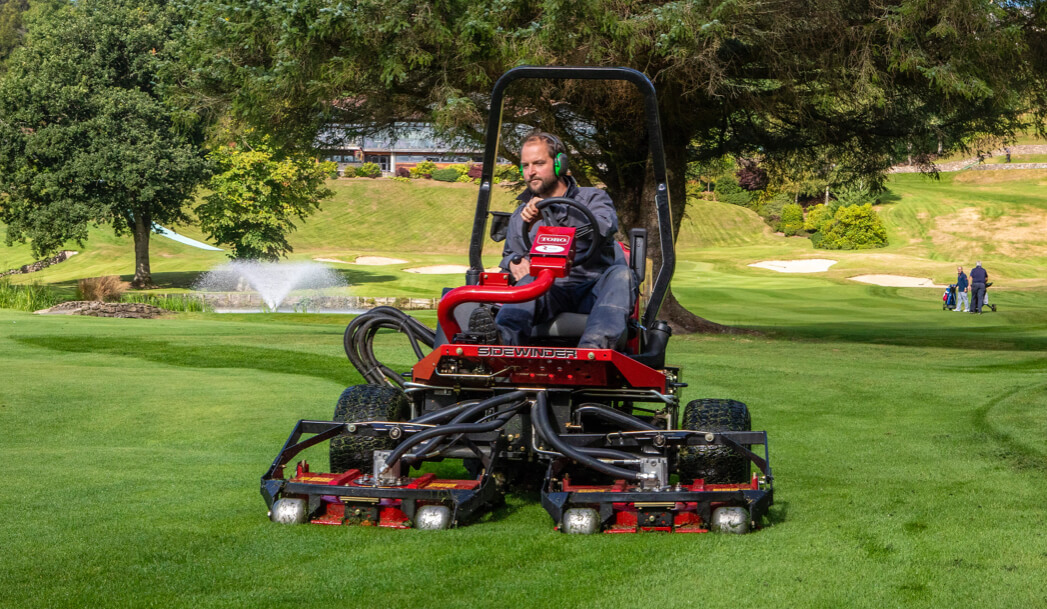
With a 90-inch width of cut and an impressive 6.4 acres an hour of mowing capacity, the Toro Groundsmaster 4300-D offers additional productivity for teams that need to achieve more in less time. The five Contour Plus cutting units hug the terrain for a consistent, even cut, while the CrossTrax 4WD system and 43.4hp Yanmar turbo-diesel engine deliver reliable power and traction to tackle steep slopes and wet conditions with confidence.
Looking for more alternatives? Toro builds a rotary mower for any need; check out the full lineup to learn more.
2. Cylinder ride-on mowers
Cylinder mowers provide a close, scissor-like cut, making them ideal for fine turf areas where precision is paramount, such as stadiums or golf greens.
The cylinder blades, mounted on a horizontally spinning reel, pass over a fixed bottom blade producing a manicured finish and a clean cut that minimises turf stress, promoting the fast recovery needed for frequent mowing.
Once again, Toro offers a comprehensive range of cylinder mowers, always pushing innovation forward to meet evolving market needs. For instance, the Greensmaster eTriFlex 3360 with GeoLink Mow is the first Toro mower that brings the option of both manual and autonomous operation, allowing users to supervise one or more units remotely, thanks to the RTK-enabled satellite guidance. And what’s best, this model requires no physical boundary wires and operates within user-defined virtual boundaries, accurate to within two centimetres.
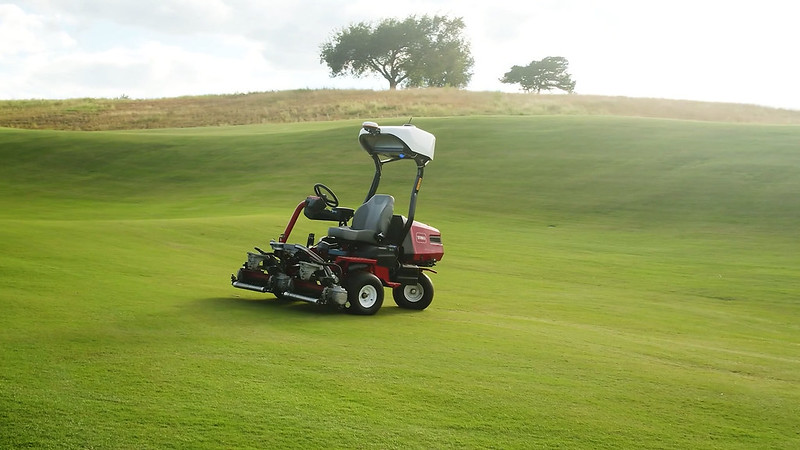
For those seeking the consistent cut of a cylinder mower combined with enhanced productivity across varied terrains, the Toro Reelmaster 3555-D offers a lightweight yet powerful solution. Its highly manoeuvrable three-wheel-drive system enables tight turns without damaging turf, while its efficient design reduces fuel consumption per acre compared to traditional fairway mowers. And with a 100-inch cutting width and Toro’s renowned Dual Precision Adjustment (DPA) cutting units, the Reelmaster 3555-D delivers a long-lasting, clean cut without fail.
3. Flail ride-on mowers
Flail mowers are built to tackle tough vegetation and overgrown areas with ease. Instead of a single blade, they use a series of small, free-swinging blades – the flails – attached to a rotating drum. This design allows them to cut through thick grass, weeds and even small branches without clogging or scalping the surface.
They’re ideal for maintaining verges, embankments and rough terrain where traditional rotary or cylinder mowers might struggle. However, with the right configuration they can also bring extra versatility to the mix.
The Toro LT-F3000 Triple Flail mower, for instance, was created with budget-conscious professionals in mind, combining high productivity with low operating costs. It’s versatile enough to maintain both short and long grass and is designed to reduce the need for frequent cuts without compromising on finish quality. And with the ability to add a cylinder attachment, this model can handle everything from precision mowing to rougher, overgrown areas.
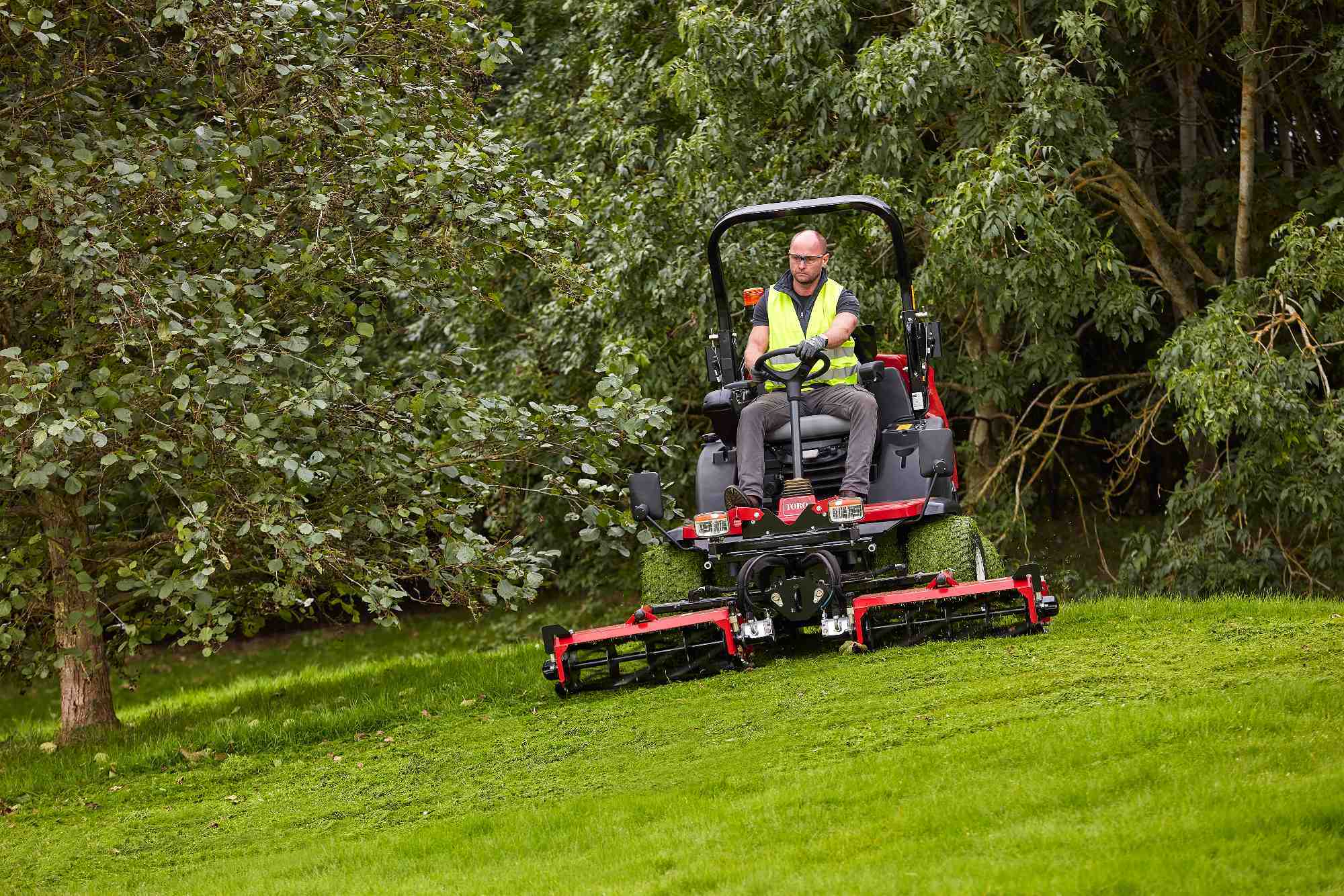
4. Zero-turn mowers
Perfect for sites with many obstacles or tight turns, zero-turn mowers provide exceptional agility and enable operators to navigate any surface with ease, significantly speeding up operations. Additionally, their compact frame and fast mowing speeds make them a favourite for turf managers and grounds professionals managing complex layouts.
A machine that perfectly embodies these qualities is the Toro Groundsmaster 7210, which pairs zero-turn capabilities with a robust 36.8hp Yanmar 3-cylinder engine to ensure high-performance mowing in environments where agility is paramount. Its heavy-duty design includes heat-treated, high-strength steel blades and the industry’s toughest spindle design, which distributes impact loads across the deck to extend machine life and reduce wear.
Key features to consider
Once you’ve narrowed down the type of mower you need, it’s time to evaluate the secondary features that will impact performance, sustainability and the overall operator experience.
1. Cutting width and deck size
The wider the cutting deck, the more ground you can cover in a single pass. Intuitively, mowers with larger decks – like the Toro Groundsmaster 5910-D with its remarkable 488cm cutting width – are ideal for wide, open spaces. Smaller decks, instead, work better in tight areas where operators need to mow around obstacles.
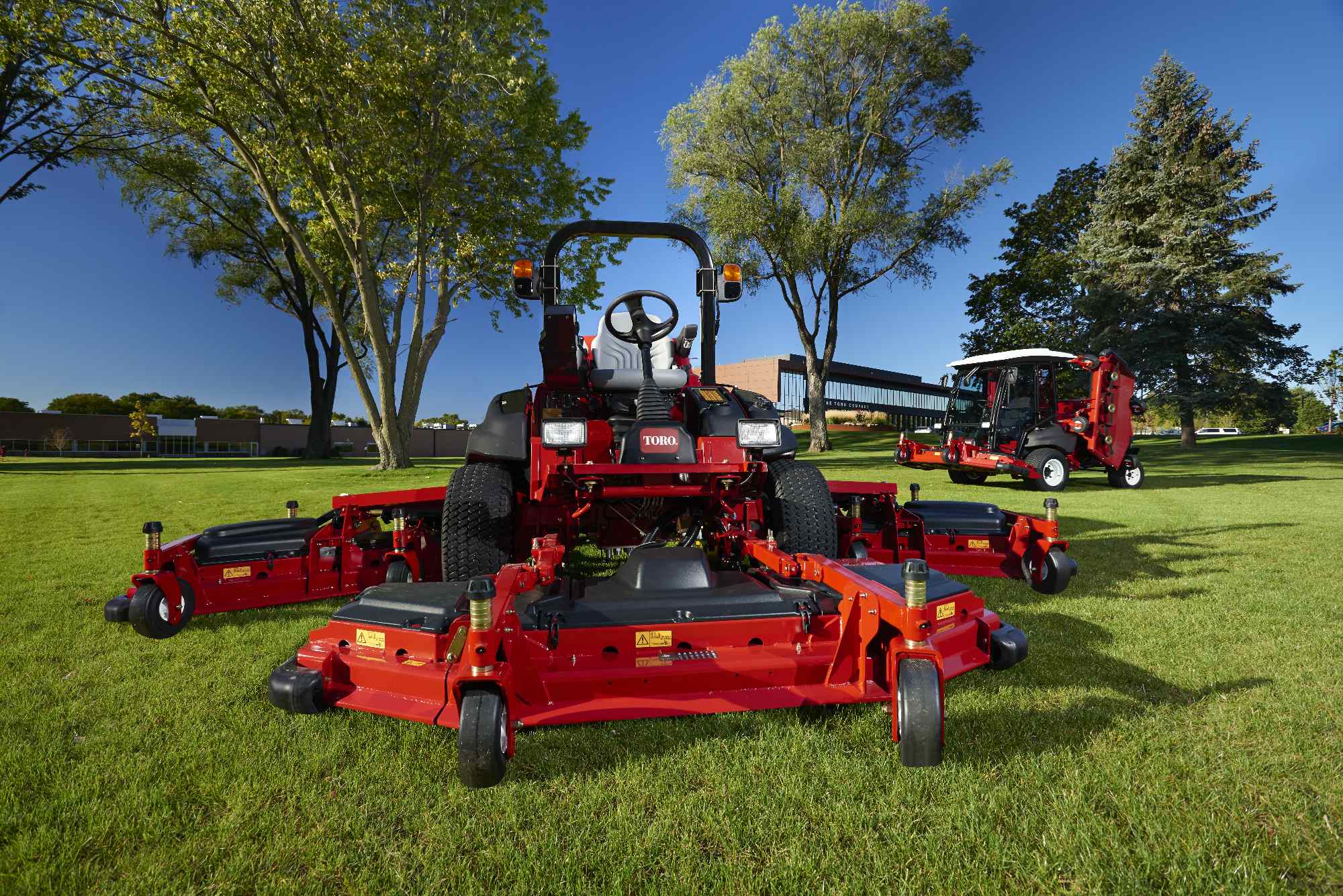
It’s also important to consider whether you need a fixed or floating deck. Floating decks follow ground contours more closely, helping minimise scalping and deliver a more consistent, high-quality cut.
2. Engine size and four-wheel drive
Engine performance is crucial if you’ll be tackling challenging conditions. Evaluate horsepower requirements based on the area you need to mow, the mower’s weight and any attachments you might use. As a rule of thumb, a more powerful engine will improve performance on inclines and when cutting thick, wet grass.
Four-wheel drive can also be an invaluable feature for maintaining traction and stability on uneven ground or steep slopes, allowing operators to work efficiently and safely on all terrains.
Alternatively, remotely-controlled or robotic mowers will perform well on hilly or undulating terrain thanks to their light design and no additional operator weight – making them a surprisingly versatile choice for maintaining complex areas efficiently. For instance, the Toro Turf Pro 500S tackles 45 percent (24º) slopes with ease – which is an extra 15 percent (7º) capability compared to the standard Toro Turf Pro 500 model, while only adding one extra kilogram to the total weight of the mower.
3. Fuel type: fuel vs battery-powered mowers
Fuel choice plays a growing role in mower selection, especially as battery-powered options continue to improve.
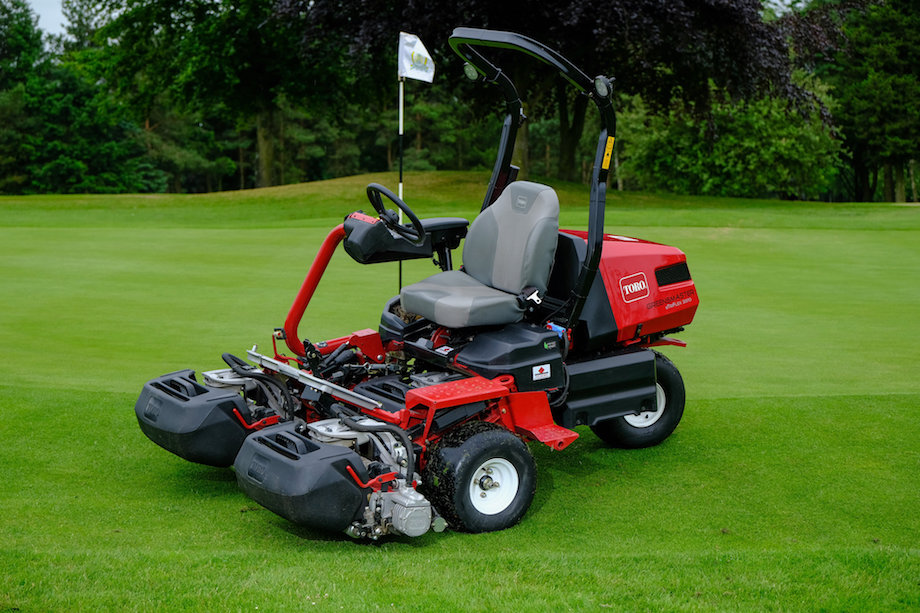
Petrol/diesel-powered mowers have long been the standard for commercial use and while in recent years advancements in engine technology have improved fuel efficiency and reduced polluting emissions, we’re seeing a gradual move toward mixed power sources as turfcare professionals gradually introduce hybrid and battery power machinery options to their fleets.
Nonetheless, battery-powered mowers are gaining ground, especially in noise-sensitive or emission-regulated environments. A key reason is that new models, such as Toro’s cutting-edge range of electric mowers, now deliver the same performance and reliability as petrol alternatives – eliminating the need for compromise.
Evaluate your typical workday, location requirements and sustainability goals to determine which power source best fits your operation. Hybrid alternatives like the Toro Reelmaster 5010-H are also available to provide extra flexibility in your choice.
4. Durability and build quality
Commercial mowers need to withstand heavy, regular use. Check for features like reinforced decks, high-grade steel construction and reliable spindles and bearings.
While mowers designed with a higher build quality tend to be more expensive upfront, it’s important to consider the total cost of ownership – as the reduced need for costly repairs, less frequent downtime and slower depreciation will usually bring more value in the long term.
5. Ease of maintenance and management
Ease of maintenance is essential for minimising downtime and optimising a wide range of turfcare resources. Look for mowers with accessible service points and clear diagnostic systems.
To support these essential goals, Toro created Intelli360: a new fleet and maintenance management system designed to take your golf course operations to a new level of efficiency. By collecting real-time data from connected equipment and displaying it through an intuitive interface, Intelli360 helps course managers make proactive decisions and manage fleet maintenance with ease.
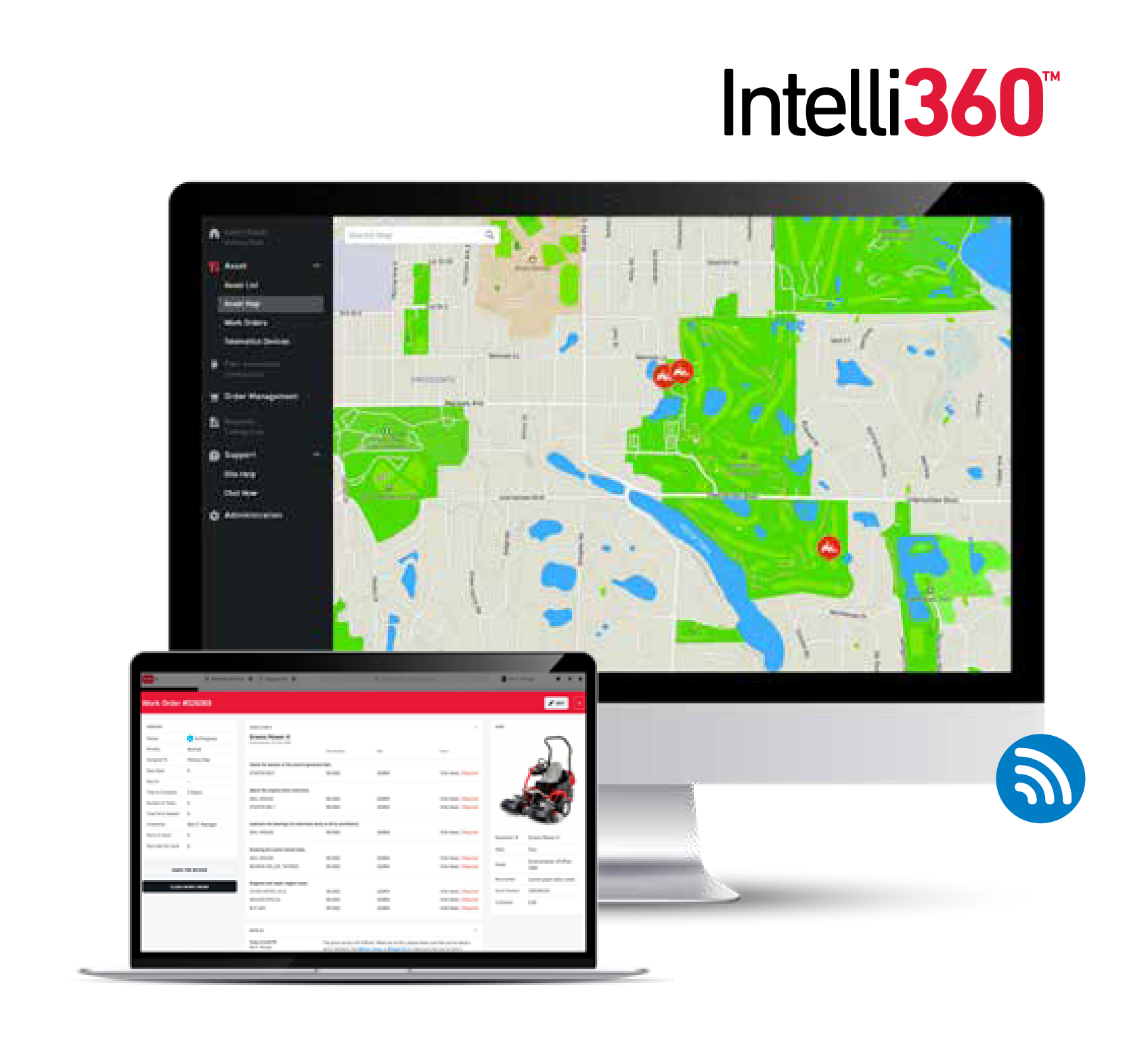
The importance of a reliable dealer for continued support
While choosing the right commercial ride-on mower requires a careful and thorough assessment of your turfcare priorities, it’s also important to consider what happens after the purchase.
In an industry where conditions and challenges can change quickly, having access to dependable support can make a real difference. In particular, buying from a reputable partner like Reesink Turfcare – Toro’s sole UK distributor – gives you access to reliable after-sales support, genuine Toro parts and expert servicing when required.
For more information about the benefits of a Reesink partnership, visit www.reesinkturfcare.co.uk or call 01480 226800.